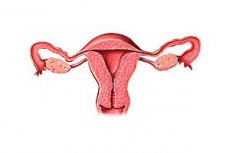Medical expert of the article
New publications
Cervical diseases
Last reviewed: 04.07.2025

All iLive content is medically reviewed or fact checked to ensure as much factual accuracy as possible.
We have strict sourcing guidelines and only link to reputable media sites, academic research institutions and, whenever possible, medically peer reviewed studies. Note that the numbers in parentheses ([1], [2], etc.) are clickable links to these studies.
If you feel that any of our content is inaccurate, out-of-date, or otherwise questionable, please select it and press Ctrl + Enter.

Symptoms cervical diseases
Background diseases of the cervix include:
Where does it hurt?
Forms
The following clinical and morphological classification of pathological processes of the cervix is proposed.
- Background processes: pseudo-erosion, true erosion, leukoplakia, polyp, flat condylomas.
- Precancerous process - dysplasia: mild, moderate, severe.
- Preinvasive cancer (Ca in situ, intraepithelial cancer).
- Microinvasive cancer.
- Invasive cancer: squamous cell keratinizing, squamous cell nonkeratinizing, adenocarcinoma, dimorphic glandular-squamous cell (mucoepidermoid), poorly differentiated.
Diagnostics cervical diseases
Histogenetic studies have shown that precancerous processes are detected by strict morphological criteria. Visually detectable most common pathological processes of the cervix, such as pseudo-erosions (ectopia), true erosions, leukoplakia, erythroplakia and polyps, should be classified as background processes. True precancer is dysplasia, which already has atypia of the superficial epithelial layer expressed to varying degrees.
What do need to examine?
Who to contact?


 [
[